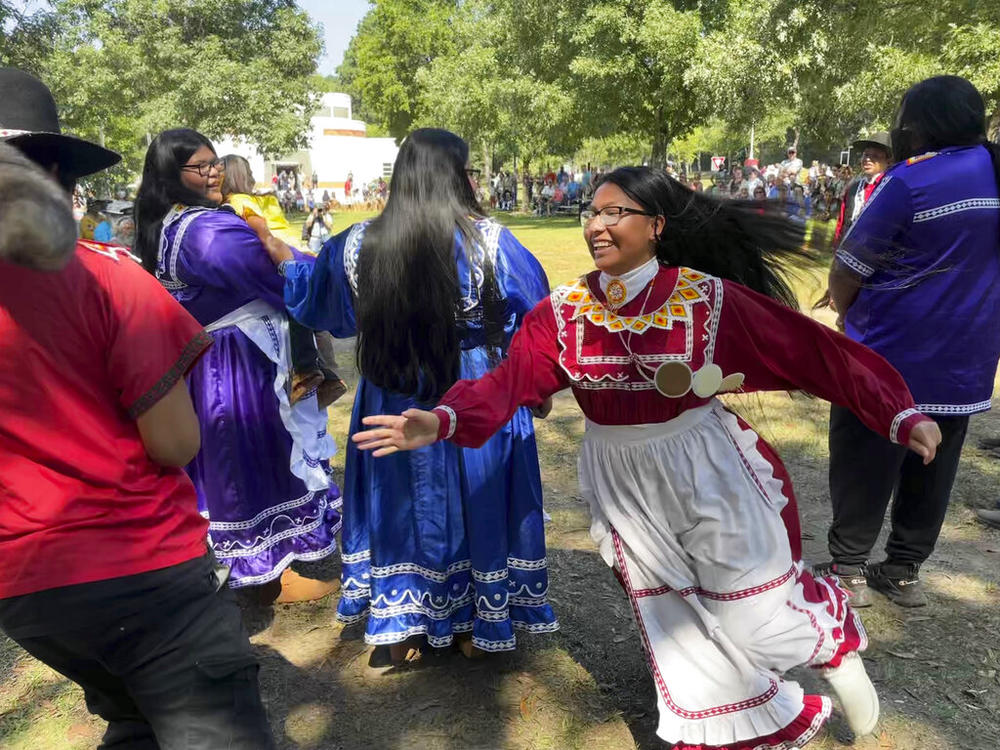
Caption
The landscape is seen from the top of the Great Temple Mound, a nine-story-tall earthen structure that gave Native Americans a 360-degree view of their territory before they were forcibly removed in the 1820s, in Macon, Ga., on Aug. 22, 2022.
Credit: AP Photo/Sharon Johnson





